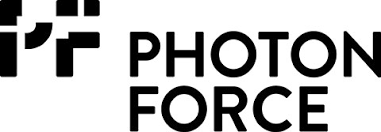
Single Photon Counting
An area of quantum technologies that will surely have a big influence on the industry in the coming years is photon counting. It is here that individual photons are counted using a single-photon detector (SPD). Unlike your regular type of photodetector, which generates an analog signal proportional to the photon flux, a single-photon detector emits a pulse of signal every time a photon is detected.
Examples of these come in the form of superconducting nanowire single-photon detectors, Geiger counters and transition-edge sensors, for example, while real-world use-cases for single-photon detectors are in the fields of fibre-optic communication, quantum information science, quantum encryption, medical imaging, light detection and ranging, DNA sequencing, astrophysics, and materials science.
However, one disadvantage of this has been that up to the present day “single-photon detection and timing capabilities have only been available as separate, bulky, and low-throughput pieces of equipment”, according to one startup whose products are accelerating the research process into “a single, simple unit, easily integrated into […] existing lab setup.”
Aligned for this future is Photon Force, an Edinburgh-based startup founded in 2015 by Richard Walker on the heritage of over a decade of successful research experience in time-resolved imaging from the CMOS Sensors & Systems Group at the University of Edinburgh, and winner of the Institute of Physics Award 2020, a business startup award from the Institute of Physics (IOP).
Photon Force
It’s all about Photon Force’s PF32 Time-Correlated Single-Photon Counting Camera, the only time-resolved photon-counting camera on the market with in-pixel timing electronics. The PF32 allows the time-tagging of incoming photons with an accuracy of 55ps. Applications for the products include:

• Diffuse correlation spectroscopy (DCS)
• Imaging through Scattering Media
• Fluorescence Lifetime Imaging
• Tracking Hidden Objects
• Imaging Light in Flight
With the goal of designing and manufacturing state-of-the-art, high-quality and accurate sensor technology to assist research initially in the biomedical sector, Photon Force joins companies such as Aurea Technology, PicoQuant and Excelitas Technologies that also deliver image sensors for accelerating photon counting technologies.

The man behind all this is none other than Richard Walker, CEO and a Co-Founder of Photon Force. His background lies in microelectronics, with eight years of Ph.D. and postdoctoral research experience in leading the design and development of 3D imaging equipment and scientific image sensors. Working with both academic and multi-national industrial partners throughout his career (including National Semiconductor, Mediso Medical Imaging Systems, and STMicroelectronics), Walker has been fortunate to conduct relevant research in a results-driven environment. Since starting up Photon Force, he has led the company to receive a number of prestigious grants and awards, including an Innovate UK R&D Grant in 2017, first prize in the 2015 Converge Challenge. (Scotland’s premier company formation competition), and receiving both an RSE Enterprise Fellowship and a Scottish Edge award.
It’s going to take innovation like that which Photon Force is showing to bring the industry forward and, the best part of it, to a new dawn of discovery.
Read more:
- Top 18 Institutions Leading Quantum Computing Research in 2022
- Quantum Computing Market Expected to Grow at Double-Digit Rate
- How to invest in D-Wave Stock & Is It a Good Investment in 2022
For more market insights, check out our latest quantum computing news here.




















